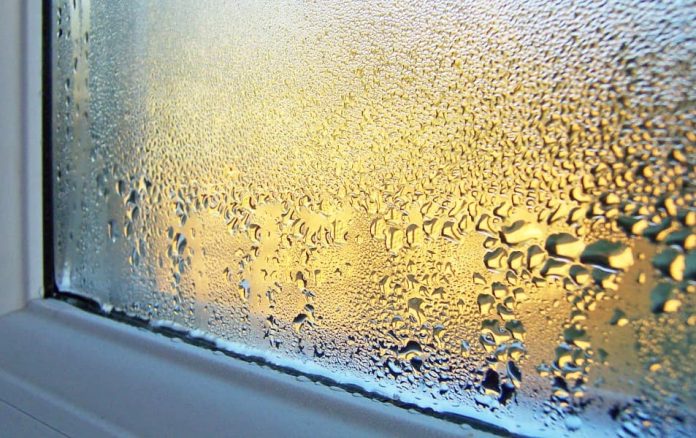Condensation on windows can be more than just an aesthetic problem—it can lead to serious issues like mold growth, dampness, and damage to window frames. Understanding how condensation forms and knowing how to prevent it can help keep your home warm, dry, and healthy. This article explores five effective methods to reduce and stop condensation on windows.
1. Improve Ventilation
One of the primary causes of condensation is poor ventilation. Condensation occurs when warm, moist air inside your home meets cold surfaces like windows, causing moisture in the air to condense into water droplets. Improving ventilation can help disperse this moist air before it accumulates on windows.
Steps to Improve Ventilation:
- Open Windows: When possible, open your windows to allow fresh air to circulate, especially after activities that generate moisture, such as cooking, showering, or drying clothes indoors.
- Use Exhaust Fans: Make sure kitchen and bathroom exhaust fans are functioning properly and use them during and after cooking or bathing. These fans help remove excess humidity from the air.
- Install Trickle Vents: Modern windows often come with trickle vents—small openings at the top that allow airflow even when the windows are closed. If your windows don’t have them, consider installing trickle vents to provide constant ventilation without significant heat loss.
2. Control Indoor Humidity Levels
Reducing indoor humidity is one of the most effective ways to combat window condensation. The more moisture in the air, the more likely condensation will form. A hygrometer, an inexpensive tool that measures indoor humidity, can help you monitor the moisture levels in your home.
Steps to Control Humidity:
- Use a Dehumidifier: A dehumidifier helps to extract excess moisture from the air. It is especially useful in rooms that tend to generate a lot of humidity, such as kitchens, bathrooms, and basements.
- Avoid Overwatering Houseplants: Houseplants release moisture into the air. If you have many plants, they could contribute to increased indoor humidity. Reduce the number of plants, or try not to overwater them.
- Dry Clothes Outside or Use a Ventilated Space: Drying clothes indoors can add a lot of moisture to the air. If possible, dry your clothes outside. If this isn’t feasible, dry them in a well-ventilated room or use a dryer that vents outside.
- Keep Lids on Pots When Cooking: Cooking produces significant moisture, especially when boiling or steaming. Use lids to trap steam and consider using an extractor fan to remove excess moisture from the kitchen.
3. Upgrade to Double or Triple-Glazed Windows
Single-pane windows are much more prone to condensation because they provide little insulation, allowing cold air to pass through easily. Upgrading to double or triple-glazed windows can help reduce condensation significantly by creating an insulated barrier between the interior and exterior.
Benefits of Upgrading Windows:
- Better Insulation: Double or triple-glazed windows have two or three layers of glass with gas (usually argon) between the panes. This setup acts as an insulator, preventing heat from escaping and cold air from coming in, which reduces the likelihood of condensation forming on the glass.
- Energy Efficiency: These types of windows are more energy-efficient, helping to keep your home warmer in the winter and cooler in the summer. This temperature stability also helps reduce the occurrence of condensation.
If upgrading your windows isn’t an immediate option, you can add window insulation film as a temporary measure. This plastic film sticks to your windows and creates a barrier that helps reduce heat loss.
4. Adjust Heating and Temperature Control
Condensation often forms when there is a significant temperature difference between the inside and outside of your home. Maintaining a consistent indoor temperature can help minimize the occurrence of condensation.
Tips for Controlling Temperature:
- Keep Your Home Warm: Try to maintain a constant temperature throughout your home to prevent sudden fluctuations that can lead to condensation. If certain rooms are cooler than others, condensation is more likely to form in those areas.
- Use a Thermostat: A programmable thermostat can help regulate the temperature in your home, keeping it warm and preventing the rapid cooling that can cause condensation to form on windows.
- Heat Each Room Evenly: Ensure that each room in your home is heated evenly. Avoid closing doors to unheated rooms, as this can create cold spots where condensation may develop.
5. Install Window Insulation or Use Insulating Curtains
If you are not ready to replace your windows with double or triple glazing, you can still take steps to improve the insulation around your windows, reducing the likelihood of condensation.
Insulation Options:
- Window Insulation Kits: Window insulation film is a simple and affordable option. It adds an additional layer of protection, preventing cold air from entering and reducing heat loss, which minimizes condensation.
- Use Thermal Curtains: Thick, thermal curtains can help keep the cold from penetrating through the windows. When closed, these curtains create a barrier that keeps the warm air inside, reducing the chance of condensation.
- Install Blinds or Shades: Insulated blinds or cellular shades can help trap air and prevent heat loss through windows. Be sure to leave them open during the day to allow sunlight to naturally warm the room.
Condensation on windows is a common but manageable problem. By improving ventilation, controlling humidity, upgrading to better-insulated windows, adjusting heating, and using window insulation, you can significantly reduce or stop condensation. Taking these steps not only protects your windows but also helps create a healthier, more comfortable living environment.
Each home is different, so it may require a combination of these strategies to completely eliminate condensation. Keeping an eye on indoor humidity levels, ensuring proper airflow, and investing in better insulation are key factors in managing this issue for the long term.















